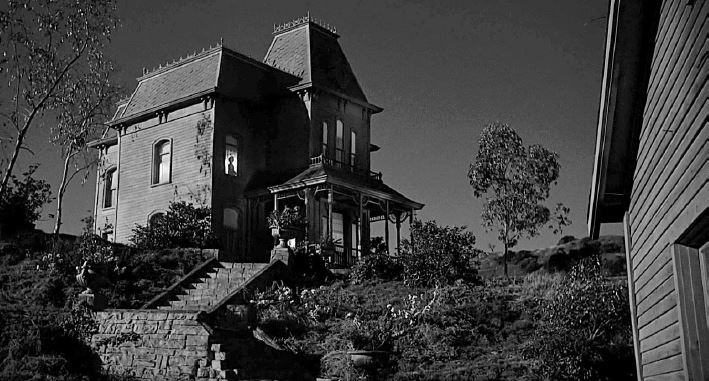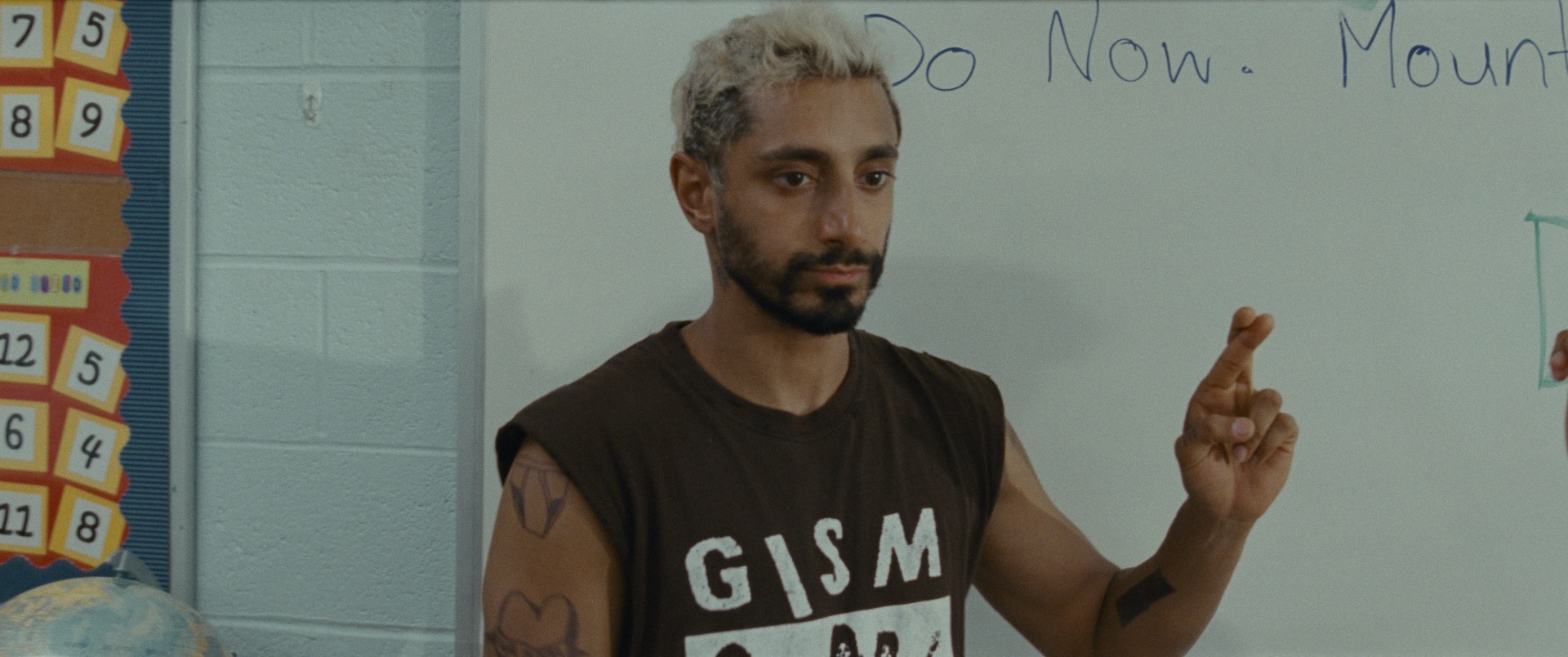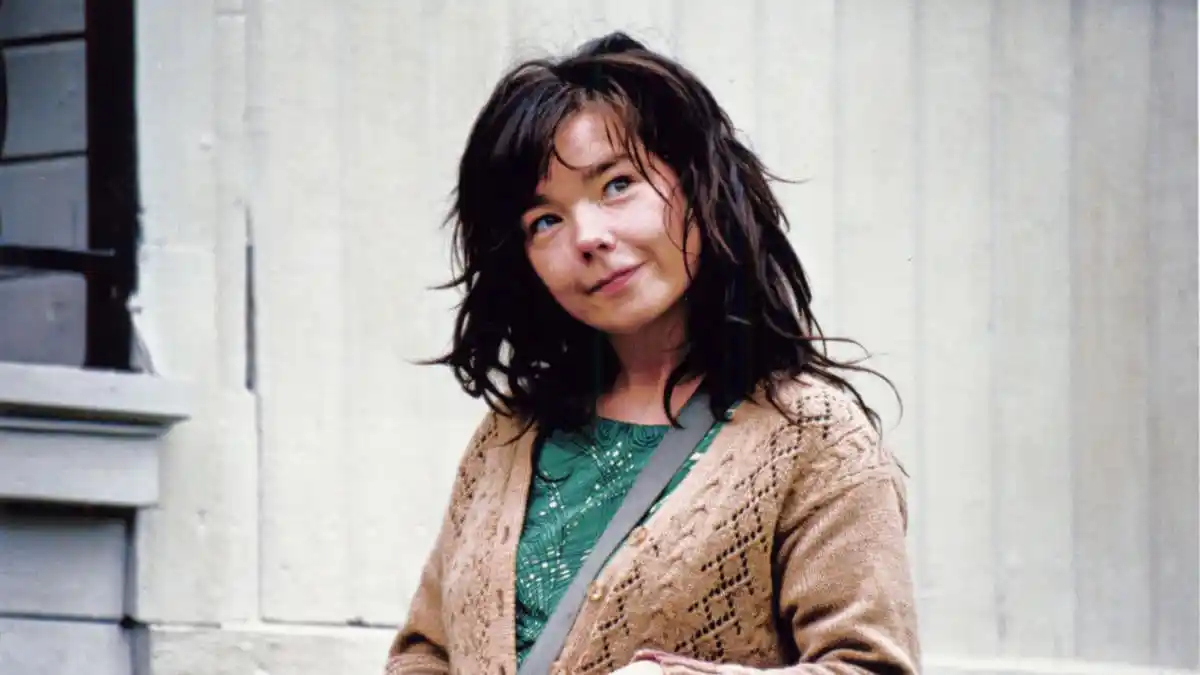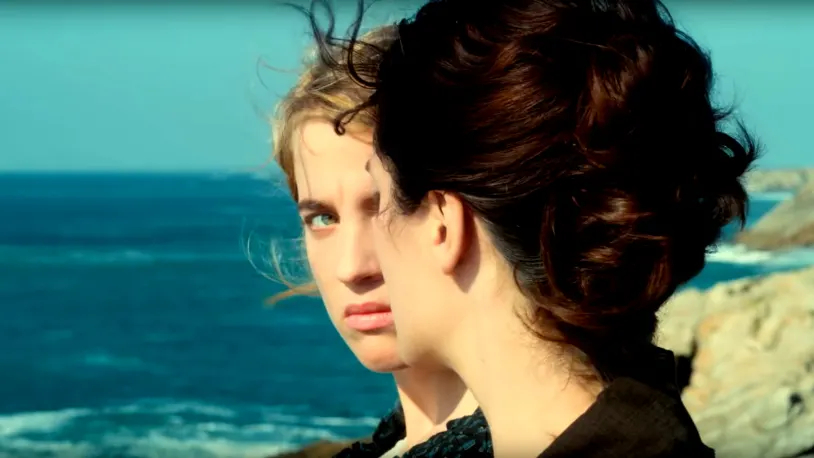Learn Film Analysis In 20 Films
I don't know about you, but I think different films can be enjoyed on different levels. Some films are an in-depth character study that make us question our humanity or compassion, such as The Banshees of Inishiren. Some films are a visual experience, less about narrative and more about aesthetic: colour, cinematography, mise en scene. And of course some films are just brain candy, and simply offer diversion and delight.
For those of us who enjoy analysing film and interrogating it as a piece of art, it can be overwhelming just how much there is to take in, and what to watch and what to look out for. In this list, I've tried to put together twenty films for you to hone your analytical skills by signposting elements worthy of analysis. This is not my list of the greatest films of all time, but each one will introduce you to very specific aspect of film, from genre analysis, to auteur study, decoding cinematography, and narrative breakdown so you can start enjoying film analytically.
Psycho

What better way to start a list of films to analyse than by looking at one of the greatest filmmakers of all time: Alfred Hitchcock. I very easily could have put Vertigo or The Birds on this list, but there are several specific reasons that we're looking at Psycho first - a film that is brazen enough to kill off the leading star in the first act.
Psycho is a great starting place for film analysis because Hitchcock has an incredibly motivated cinematic style that is difficult to miss. That's not to say it's simplistic: far from it - every single camera movement, prop, close up, every side glance is done with such clear intent that you can easily notice and start questioning: 'why do you suppose he short that high up?' 'Why are there so many mirrors and what do they represent?'. The subtlety and motivation behind his camera work will be instantly familiar to David Fincher fans for the same reason. All you've got to do is learn to notice and question why. There's no better place to do this than with the infamous shower scene: a masterclass in camerawork, editing, and sound.
Dunkirk

Next, we're going to look at narrative structure, so I'd like to recommend Dunkirk by Christopher Nolan. I don't think this is his masterpiece - that belongs to Interstellar - but this film will introduce you to a complex non-linear narrative structure that demonstrates how time can be manipulated through editing. I don't really want to explain the mechanics in too much detail because part of the joy is working it out, but essentially, Dunkirk tells three stories, each in completely different time scales. As you watch it, pay close attention to how the sequencing - literally the order or scenes - builds a sense of tension, peaking at the actual rescue attempt. It's also one to make special effort to watch in IMAX - another staple of Nolan's films, as he uses the format to its fullest cinematically. If you've not experienced IMAX, wait until this is back in cinemas and make the effort to go do you can experience this in its full glory.
Grave of the fireflies

Grave of the Fireflies is on this list as your introduction to anime as a serious film medium. In my option Studio Ghibli's finest work, it's an anti-war film that explores the impact of conflict on a brother and sister. Their remarkable resilience in the face of setback after setback makes their tragic ending even more heartbreaking. Watch this film and consider the impact of the medium itself - would this be as effective if it weren't animated? For me, the contrast of the childhood optimism that we associate with animated movies with the cold realities of war makes the message far more powerful, and the children all the more vulnerable.
Locke

For budding screenwriters among you, my recommendation is Locke, a film that can't hide behind special effects or big budget set pieces: the whole films is Tom Hardy fighting fires: a marital breakdown, missing a football game with his son, coordinating a concrete delivery remotely - all from his car phone. This will be your first character study of a man who is duty bound to a fault: the dialogue is razor sharp, so as you watch this film, pay close attention to how writer/directer Steven Knight and solo actor Tom Hardy create a portrait of a man who only knows how to manage life's challenges with a cold, calculative, pragmatism.
The Artist

How do you sell silent cinema to a contemporary audience? It's not an easy ask with many discounting anything in black and white, let alone without speech. Well the answer comes in the form of TheArtist. This film is a love letter to early cinema, just as the talkies were becoming the new norm. But by taking a step back to a time where so much more story had to be told with performance and cinematography, you'll hone your ability to identify visual storytelling. It's also a great sparring ground for identifying the Kuleshov effect in editing: pay close attention to how each title card connects the shot that precedes and follows it - every cut is effectively cause and effect, cause and effect.
Sound of Metal

Next we're going to focus on sound, and our case study is sound of metal. Just as POV dhots are often used to show the audience what a character can see and position us with them, this film uses fantastic sound design to offer us the perspective of a musician who is losing their earring. It makes for an uncomfortable watch at time, so as you're watching pay attention to how a sense of panic is built through the combination of sound, camerawork a d performance.
Horse Girl

Horse girl is a film about a woman whose reality comes into question as her dreams seep into her daily life - which is not new in film but what I loved about It was how it executed. It is almost all the films do you watch are coherent and makes sense because of something we call continuity editing: long established editing techniques, such as match on action, Line match the 180° rule that mask each cut and allow them to the stand space and Time in places they've never actually been horse girl uses these rules and breaks them to intentionally disorientate in the audience and lead them as frantic as the lead character. Why do you watch pay close attention to your sense of time and how do you anticipate each scene progressing into the next you will find your expectations dashed and if you're anything like me left, feeling uneasy.
Butch Cassidy and the Sundance kid
Anyone whose been to my channel before will know about my appreciation for butch Cassidy and the Sundance kid. But why this western rather than the good the bad and the ugly? Or The Searchers? Butch, Cassidy and the Sundance kid marks the end of the classic western era. By the time this film came out audience tastes were beginning to change, and the narrative is as much a farewell to the genre as it is the day of the bandit at the turn of the 20th century. While you watch, look out for this theme of finality and endings: pay attention to how the inevitable end of the duos life of crime is foreshadowed throughout and then compare your notes to my analysis which you can watch here:.
Dancer in the Dark

This is a film that was introduced to me as a film student and it has stayed with me ever since. It's on this list because it is a postmodern genre study of the traditional musical but there is nothing conventional about this Lars Von Trier film - a name you'll come to know more as you explore cinema. It plays on all of the conventions we expect to see in a musical - big set prices, choreography, lots of colour - but it tells it from the perspective a young factory worker who lives for music but who is slowly going blind. the contrast between this increasingly bleak existence and idealised musical spectacle illustrates the unrealistic romance of musicals - in stunning scenes like this, she is literally transported from the realist, documentary-esque style that Von Trier is known for, into the conventions that we expect of the genre - it's as if we experience her hyper-reality. This film will change the way you look at musicals and acts as a fantastic introduction to one of cinema's most controversial directors.
Jaws

Whilst were on the topic of music, this film has the most famous two notes of all time, but that's not why its on the list. Spielberg is the man responsible for what we now recognise as the modern blockbuster, and this is the film which started at all. The reason this film is in the list is it will show you how to pace a film. Spielberg is known for his long takes and this is just one of the tools he uses to draw out a scene and leave the audience hanging in the edge of their seat in anticipation for this. Films very often get this wrong and feels either too slow or too fast, but jaws will show you that great films know how each beat plays with the audience. Pay attention to your awareness of when things are about to go wrong or looking danger and how Spielberg teases this with his pacing.
Rear window

It's undeniable that there is an element of voyeurism about cinema and no film explores this quality quite as explicitly as Hitchcock's rear window. This will be your introduction to the concept of the male gaze - the widely accepted principle that the camera lens offers us a heterosexual male perspective, and in this case we literally have that with the first person view point of the male character directed by a male filmmaker. As you watch, try to think of the camera as an actual person, whose eyes are we looking through? What does that say about gender and the characters attitude towards women?
Portrait of a Lady on Fire

To appreciate truly minimalist, understated filmmaking, I recommend portrait of a Lady on fire. The lack of any score, and minimal dialogue helps us to focus on a story communicated primarily through through the eyes of the characters. While you watch, pay close attention to how director, Céline Sciamma, builds layers and layers of mystery around the titular character by revealing them through tidbits of information, but never fulling revealing her for the first 20 minutes. By the time we do eventually see them, we are as curious about her as the painter in the film.
In contrast to rear window, It's also a great example of the female gaze - a film about expectations put on women, shown from a female character's perspective, by a female director - look out for the female gaze in the camerawork, and how their developing relationship is represented in the portrait as it goes from abstract to intimate.
Children of Men

I'm sure you've heard the saying show don't tell. Well this film exemplifies just that. If like to recommend children of men for it's visual Storytelling. We don't really know how the world got into its bleak, dystopian state, or how governments and society have adapted but we see subtle clues to it everywhere like here and here. Watch this film and really take in the background, not just the action in the foreground. You'll be amazed at how much works building you'll discover simply through the mise end scene .
Cloe From 5 to 7

There are conventions of cinematography in mainstream films that you may not even be aware of but you'll definitely notice when they are broken: the rule of thirds, eyeliner match, open framing. Nowhere is this more evident than in films of the French new wave, a film movement all about breaking the rules and defying the Hollywood system of filmmaking. And as a jumping on point for this film moment, we'll be watching Cleo from 5 to 7. It's not as radical as other new wave films we could have looked at, but as you watch take note of whenever the camera does something… different. MONTAGE - It'll demonstrate how exciting variation and difference can be.
Snowpiercer

We've already talked about a range of outstanding filmmakers in this list - each of whom could be described as an auteur, but one of the most exciting and clearly identifiable cinematic signatures belongs to Bong Joon Ho, the Korean director that became a household name when Parasite won Best film a few years ago. I have followed him since Snowpiercer, which is an ideal jumping on point if he's new to you: it's in English, it's incredibly fast paced, but most importantly, illustrative of how a director can have a set style and theme that they explore I most of their movies - in bong Joon Ho's case, issues surrounding class divides as told through an outrageous analogy, in this case, a train with the higher classes at the front and the lower classes at the back. Its filled with dark humour and an aesthetic that you'll come to expect if you follow this up with viewings of Parasite and Okja. I'd recommend you try and watch all of his back catalogue and ask yourself what quantify is a bong Joon-ho film? In fact, I challenge you to ask this of each of your favourite directors.
Inglourious Basterds

perhaps a controversial opinion, but Inglorious Basterds is my favourite Tarantino movie. We're actually going to look at it because of two specific scenes in firstly the interrogation of the farmer at the very beginning, and secondly the under cover interrogation by the SS officer in the second act, both of these scenes are truly gripping, despite comprising mostly of cinemas. Most boring sequence of shots shots reverse shot as you watch, pay close attention to how Tarantino uses lingering shots of each speaker, and slight changes to our proximity to the characters to communicate the balance of power between each character exchange. These are some of the tensest moments that I can think of in recent films and I dare you to watch it without holding your breath. Your task is to identify how Tarantino constructs this quality.
Amadeus

Amadeus is a truly accessible entry into period dramas. The mise en scene, themes and play on relationships is authentically period drama, but the language is very contemporary. It's a biopic of the composer Mozart, as told by his jealous and nowhere near as talented counterpart, Solitary. This makes for such an interesting case study because we are positioned as an audience to view each event from the perspective of an outsider - Solitary, looking in. He goes from revering Mozart or hating him for his talent - the effect is Mozart carries a god-like quality unobtainable to the rest of us, and it's beautifully captured in scenes like this (either opening jingle or Clarinet concerto)
Consider how different the film would feel if it were told from Mozart's perspective.
2001: A Space Odyssey

2001 is the absolute definition of real science-fiction. I'm not talking about this or this I am talking about actual technology pushed to the limits, meaning -of-life, what else is out there science fiction. The film as fantastic for analysis as it's so open to interpretation: what does the monolith mean? What is Director, Kubrick saying about man and machine in the interactions with HAL? When you watch it, pay special attention to the camerawork: it's precise, measured, and lifeless: almost like the technology that makes up the main plot point. When you allow yourself to approach a film, knowing it is open to interpretation, you can begin really thinking about how you appreciate film as an art for no difference to oil on canvas in 2001 will prove to be a fantastic training ground for this skill.
Her

Next we're going to bet looking at colour in film and the case study is her by spike jinze. Colour grading is without doubt one of the most powerful tools in a filmmakers Arsenal. Perhaps it's because colour is a largely universal language that goes beyond just film but into fashion architecture all aspects of culture. What this means is when we see blue or red or an absence of colour. It has the innate ability to make us feel something even if we aren't sure why. In her pay attention to how calories used to reflect Joaquin Phoenix's emotional state and feelings towards Scarlett Johansson's artificial intelligence, character, different shades of red and different degrees of separation. Make this a fascinating case study of colour.
Seven samurai

It's only a matter of time once you start taking film seriously before you discover Akita Kurosawa. Seven samurai is a fairly simple Natalie about a group of samurai, obviously, who become employed to protect a village against bandits. It's a narrative that's been replayed countless times in Hollywood, but never as well as it is here. Watch this film for a masterclass in blocking - the art of arranging actors props setting within a scene. Something you'll come to see quite quickly with Kurosawa films is the way he uses movement and space to communicate just as much as dialogue and action. Nowhere is this more apparent than in the final battle scene which you'll be analysing on a shot two shot basis. Try to think beyond, simply how each shot is framed, and instead, consider how the players within each scene move and use the space within them.
